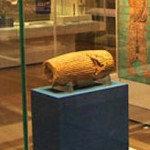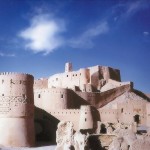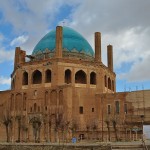 As reported by Archaeology News Network last month, a reception chamber with columns and a throne chamber, which belong to a 2,500-year old Persian palace, were found during excavation at the Oluz Mound in the Göynücek district of Amasya province, Turkey.
As reported by Archaeology News Network last month, a reception chamber with columns and a throne chamber, which belong to a 2,500-year old Persian palace, were found during excavation at the Oluz Mound in the Göynücek district of Amasya province, Turkey.
Amasya Governor Osman Varol visited the Oluz Mound to examine the excavations and to receive information about the technical and structural features of the excavation site. He announced that a new structure was discovered during the excavation.
Istanbul University Archaeology Department faculty member and professor, Dr. Şevket Dönmez, is leading the excavation works and he stated that movable cultural material ruins showed that a group of Persian-origin Akhamenids might have lived at the Oluz Mound in the year 450 B.C.
The mound is located at 25 kilometeters southwest of the Amasya city center. The team of archeologists have reported that new units of this Persian city have been excavated. The team knows that there is a path, a mansion and a fire temple and it is believed that this is the first report of such finding in the world. A reception chamber with columns and a throne chamber have also started to emerge for the first time. The team of archeologists are beginning phase of the excavation work for these chambers and are very excited about the findings from the Persian Empire.
The archeologists did not know that they could find such a Persian city in that site. There are currently 12 academics, 10 archaeologists and 15 archaeology students working on the excavation site. The team had only expected to excavate a mid-Anatolian mound and find answers to their questions regarding the Iron Age culture. However, they came across an entirely different situation.















